1. Design Optimization
AI can analyze vast amounts of data to optimize boat hull designs for efficiency, stability, and speed. By simulating various design parameters, AI identifies configurations that minimize drag and maximize fuel efficiency, leading to boats that perform better in a wide range of conditions.
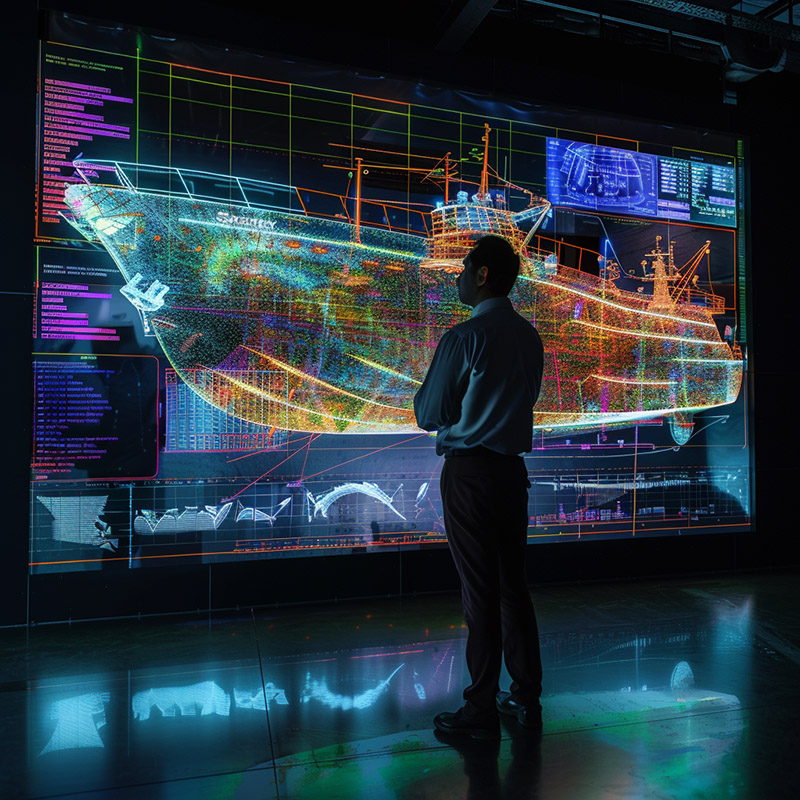
Boat Design Before AI
Boat design relied heavily on traditional methods and the experience of designers to manually calculate and test various hull shapes and configurations. This process was time-consuming and often required building and testing physical models to identify the most efficient designs, limiting the speed of innovation and optimization.
Boat Design After AI
With AI-driven design optimization, the process has become significantly faster and more precise. AI algorithms can simulate and analyze millions of design variations, identifying the optimal hull shapes and configurations that maximize efficiency and performance under various conditions. This not only accelerates the design process but also uncovers innovative design solutions that might not be intuitive to human designers, leading to breakthroughs in boat performance and fuel efficiency.
2. Material Selection and Structural Analysis
AI algorithms can recommend materials and structural designs that provide the best balance of strength, weight, and durability for specific boat-building projects. This includes analyzing composite materials and their performance under different environmental conditions, leading to safer and more durable vessels.
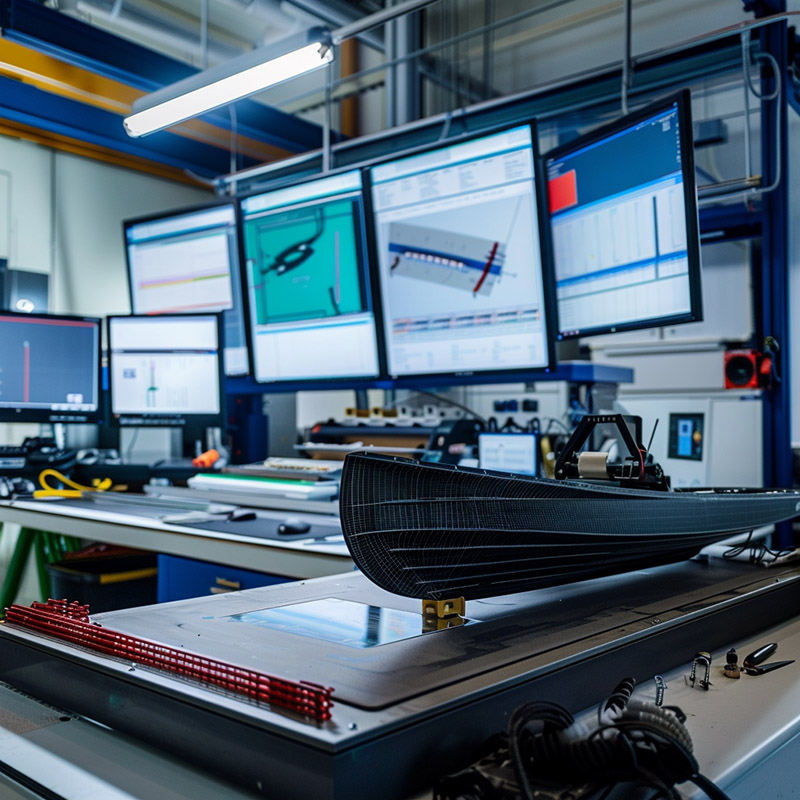
Material Selection Before AI
Selecting materials for boat construction was a balance between cost, weight, strength, and durability, often based on past experiences and available materials. Structural analysis required extensive testing to ensure safety and performance, a process that could delay production and increase costs.
Material Selection After AI
AI has transformed material selection and structural analysis by using predictive models to assess the performance of various materials and composites under different conditions. This allows for the selection of materials that provide the best combination of lightness, strength, and durability for each application, optimizing boat safety and performance while potentially reducing costs. AI can also simulate stress and impact scenarios, ensuring designs meet safety standards before physical testing, streamlining the development process.
3. Automated Quality Control
AI-powered vision systems can inspect boat construction at every stage, identifying defects or deviations from design specifications in real-time. This ensures higher quality craftsmanship and reduces the need for costly corrections after the build process.
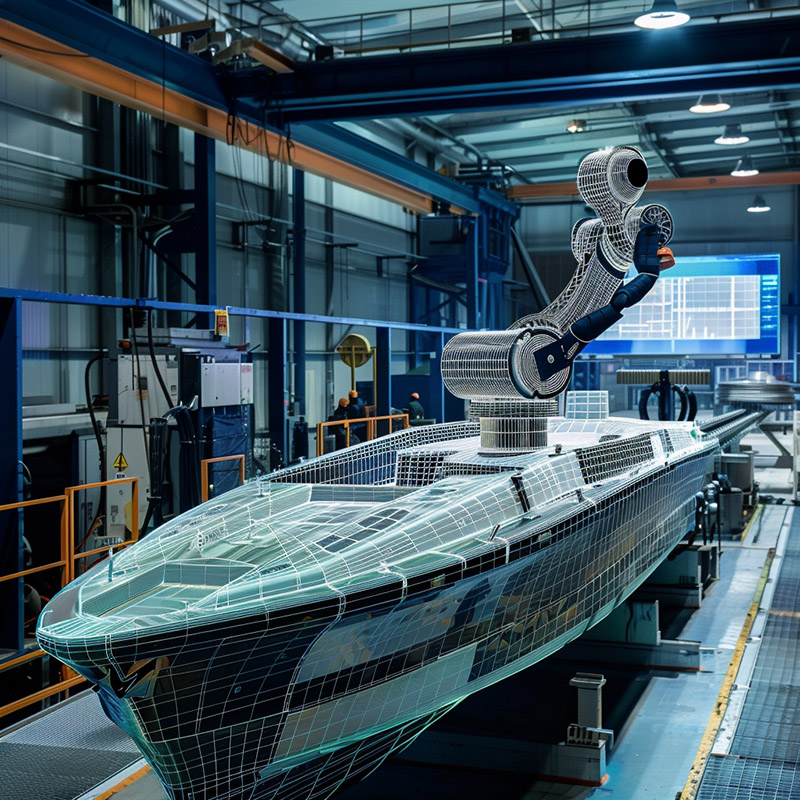
Quality Control Before AI
Quality control in boat building was predominantly manual, relying on visual inspections and spot checks by experienced workers. This method was not only labor-intensive but also prone to human error, potentially allowing defects to go unnoticed until they caused issues later.
Quality Control After AI
AI-powered automated quality control systems have significantly improved the detection of manufacturing defects and deviations from design specifications. High-resolution cameras and sensors, guided by AI, perform thorough inspections at every stage of the construction process, identifying imperfections that the human eye might miss. This results in higher quality boats, reduced rework, and increased customer satisfaction by ensuring that every vessel meets stringent quality standards.
4. Predictive Maintenance
AI can monitor the condition of critical boat systems and components, predicting when maintenance is needed to prevent failures. By analyzing data from sensors and historical maintenance records, AI helps boat owners proactively address issues before they lead to downtime or expensive repairs.
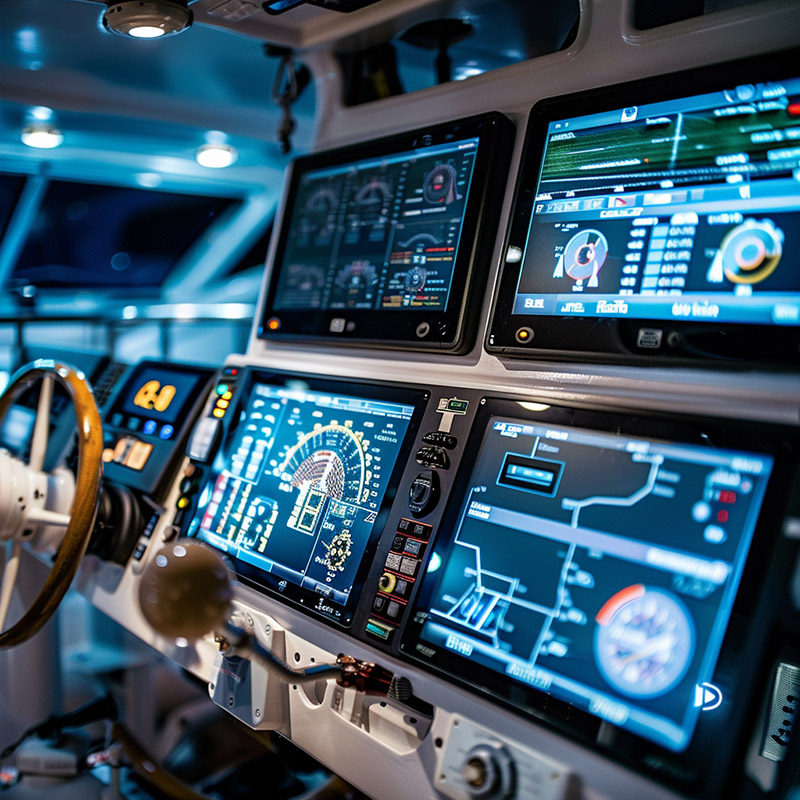
Boat Maintenance Before AI
Maintenance schedules for boats were often based on manufacturer recommendations or past experiences, leading to either premature maintenance, which increased costs, or delayed maintenance, which could result in failures at sea. This reactive approach to maintenance was inefficient and could compromise safety.
Boat Maintenance After AI
With AI-driven predictive maintenance, sensor data from boat engines and systems are continuously analyzed to predict when maintenance is needed, preventing breakdowns before they occur. This proactive approach ensures that maintenance is performed only when necessary, optimizing costs and extending the lifespan of critical components. It also enhances safety and reliability, as potential issues are addressed well before they could lead to failure.
5. Dynamic Routing and Navigation
AI can enhance a boat's navigation systems by dynamically calculating the most efficient routes based on current weather conditions, water currents, and obstacles. This not only improves fuel efficiency but also ensures safer passage by avoiding potentially hazardous conditions.
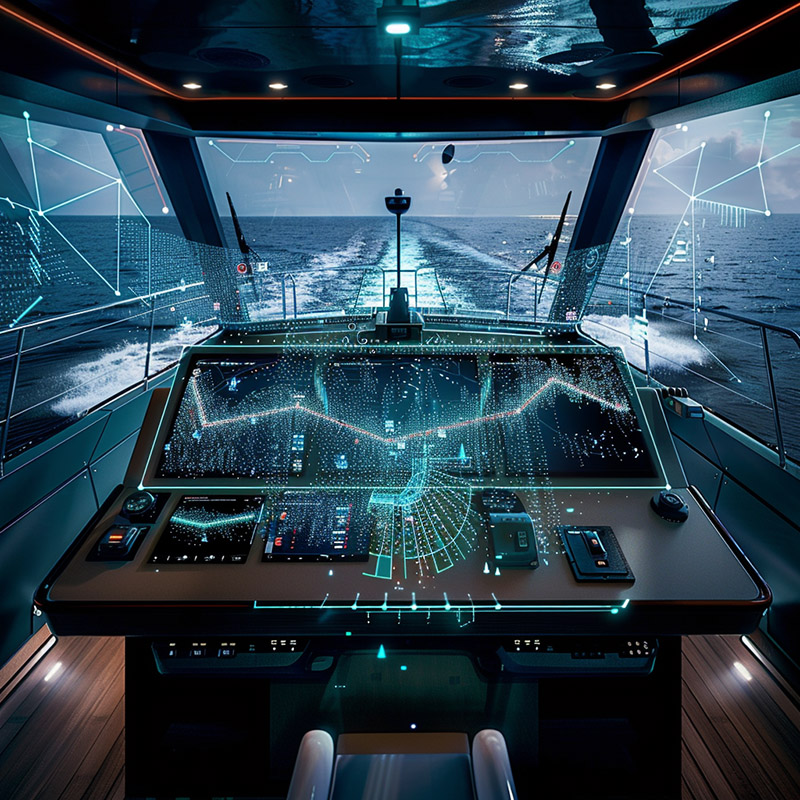
Boat Navigation Before AI
Navigating boats, especially over long distances, involved manual route planning based on static maps and weather forecasts. Skippers had to continuously adjust the course in response to changing conditions, which could be exhausting and imprecise, leading to longer travel times and increased fuel consumption.
Boat Navigation After AI
AI-enhanced dynamic routing and navigation systems continuously analyze real-time data from weather reports, sea conditions, and maritime traffic to calculate the most efficient course. These systems can make adjustments on the fly, optimizing travel time and fuel efficiency while ensuring safety. This not only reduces the workload on the crew but also contributes to more sustainable operations by minimizing fuel consumption and emissions.
6. Autonomous Docking Assistance
AI technologies can assist in the complex process of docking, using sensors and real-time data analysis to maneuver boats into docks with precision. This reduces the risk of collisions and damage, making docking safer and easier, especially for less experienced boaters.
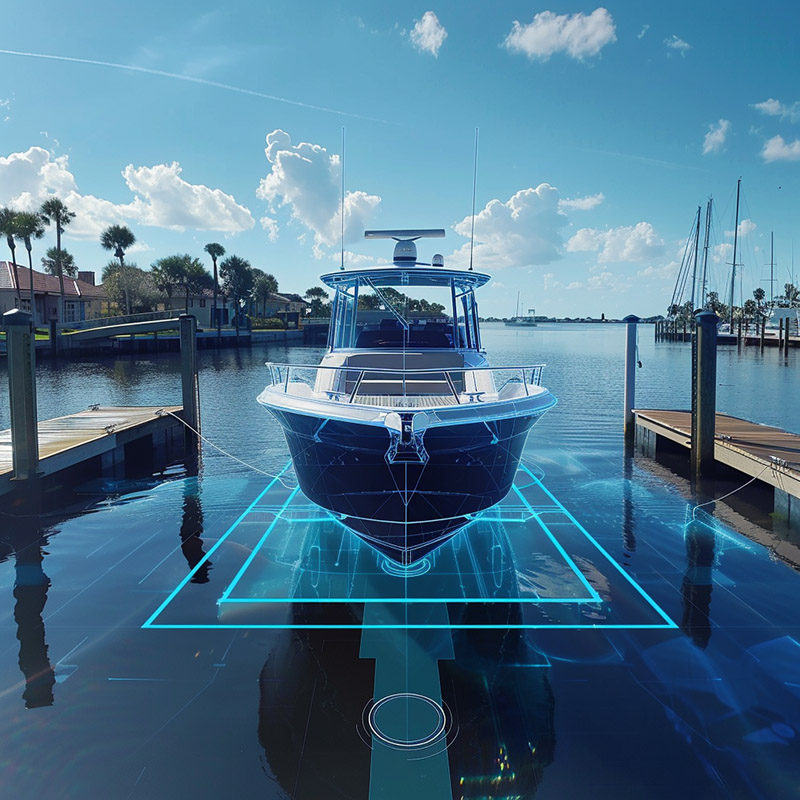
Docking Before AI
Docking a boat was a skillful but challenging task that required experience and precision, especially in crowded marinas or under adverse weather conditions. Mistakes during docking could lead to accidents and damages, causing stress for boat owners and operators.
Docking After AI
With the advent of AI-powered autonomous docking assistance, boats can now dock with precision and safety, reducing the risk of collision and damage. These systems use sensors and AI algorithms to maneuver boats into the dock, adjusting for wind, current, and other boats. This technology makes docking accessible to less experienced boaters and enhances safety and confidence in marinas.
7. Energy Management
For boats with electric or hybrid propulsion systems, AI can optimize energy use to extend battery life and improve range. By analyzing usage patterns and environmental data, AI adjusts power distribution across systems to ensure efficient operation.
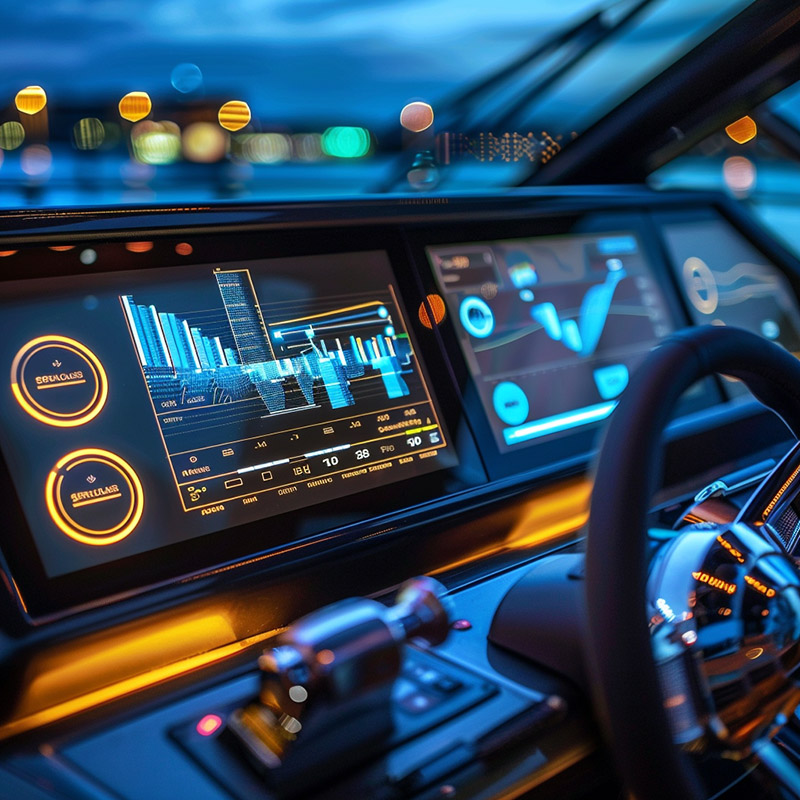
Energy Management Before AI
Managing the energy consumption on boats, particularly those with electric or hybrid propulsion, was a manual process. Operators had to monitor battery levels and adjust their usage of onboard systems to conserve power, which could limit the functionality and comfort on longer journeys.
Energy Management After AI
AI-based energy management systems optimize the distribution and consumption of energy on boats, ensuring that propulsion, navigation, and onboard comfort systems are powered efficiently. These systems predict energy needs and manage battery charging and discharging cycles to maximize range and performance, making electric and hybrid boats more practical and appealing for a wider range of applications.
8. Load and Ballast Optimization
AI can calculate the optimal distribution of load and ballast to improve stability and performance under various conditions. This is particularly useful for cargo vessels and racing yachts, where weight distribution significantly impacts speed and safety.
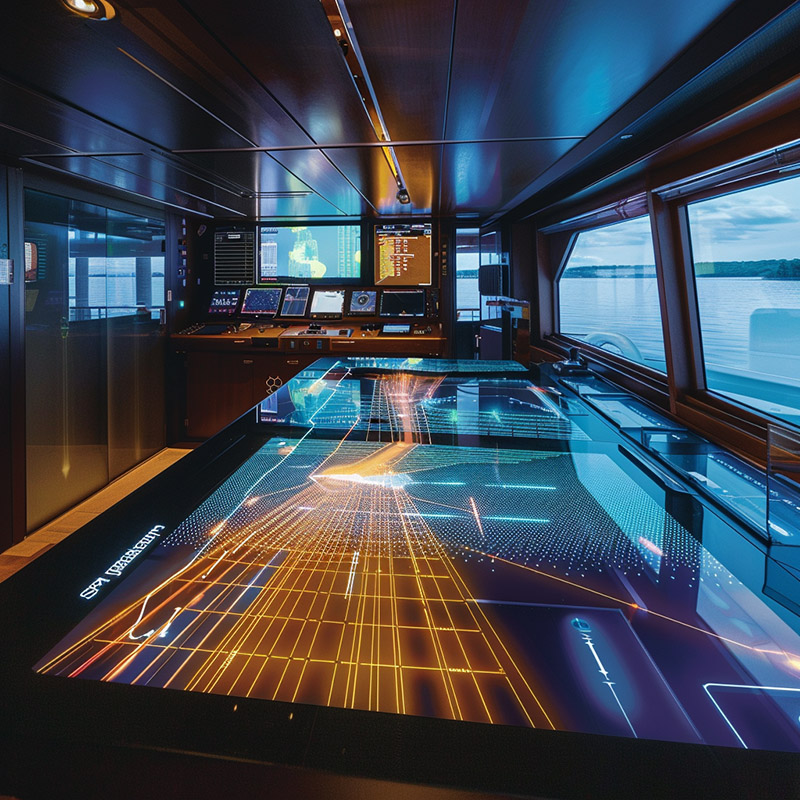
Ballast Optimization Before AI
Optimizing the load and ballast for performance and stability was often done through trial and error, requiring physical adjustments and test runs. This process could be time-consuming and imprecise, potentially affecting the boat's handling and safety in different conditions.
Ballast Optimization After AI
AI algorithms now can calculate the optimal distribution of weight and ballast onboard, enhancing stability and performance. By analyzing the boat's design, current load, and expected conditions, AI provides precise recommendations for weight distribution, improving speed, fuel efficiency, and safety without the need for extensive manual testing.
9. Crew and Passenger Safety
AI-driven monitoring systems can enhance safety on board by detecting man-overboard situations, unauthorized access, or unsafe behaviors in real time. This allows for immediate response to potential safety threats, improving overall security for everyone on board.
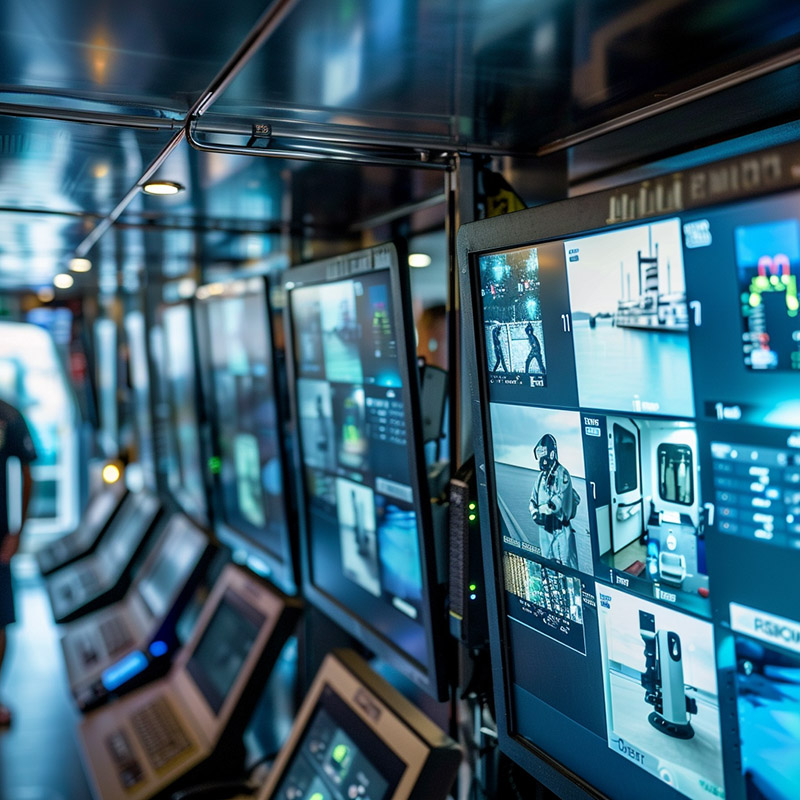
Crew Safety Before AI
Ensuring the safety of crew and passengers relied heavily on manual surveillance and checks, which could miss critical moments or safety breaches, especially in large or complex vessels. This approach to safety was reactive, with interventions only occurring after a problem had been identified.
Crew Safety After AI
AI-driven monitoring systems enhance crew and passenger safety by continuously analyzing video feeds, sensor data, and other inputs to detect unsafe conditions, unauthorized access, or individuals in distress. These systems can alert crew members to potential safety issues in real-time, allowing for immediate action to prevent accidents or respond to emergencies, thereby creating a safer environment on board.
10. Performance Monitoring and Enhancement
AI can continuously analyze a boat's performance data, suggesting adjustments to operating parameters or flagging areas for improvement. This ongoing optimization process ensures that boats operate at peak efficiency, delivering enhanced speed, handling, and fuel economy over time.
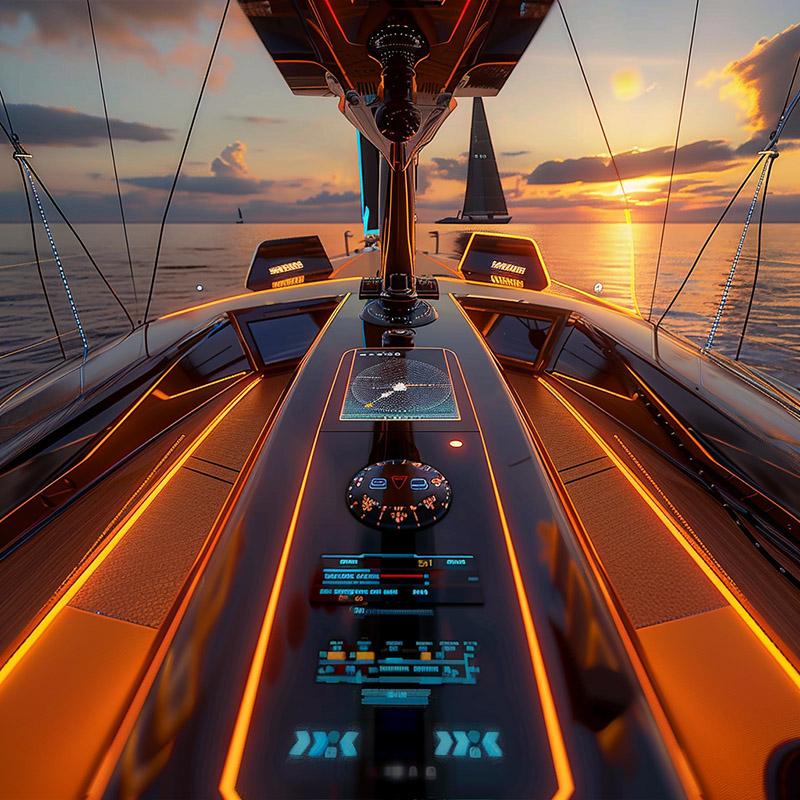
Performance Optimization Before AI
Monitoring and enhancing the performance of boats typically required manual data collection and analysis, with adjustments based on general guidelines or the intuition of experienced operators. This approach limited the ability to fine-tune performance and adapt to changing conditions.
Performance Optimization After AI
AI-powered performance monitoring systems continuously collect and analyze data from various sensors on the boat, providing insights into how different factors affect speed, stability, and fuel consumption. AI can then suggest adjustments to operating parameters to optimize performance, whether for competitive racing or efficient cruising. This real-time feedback loop allows for constant improvement and adaptation, ensuring boats operate at their peak potential in any situation.